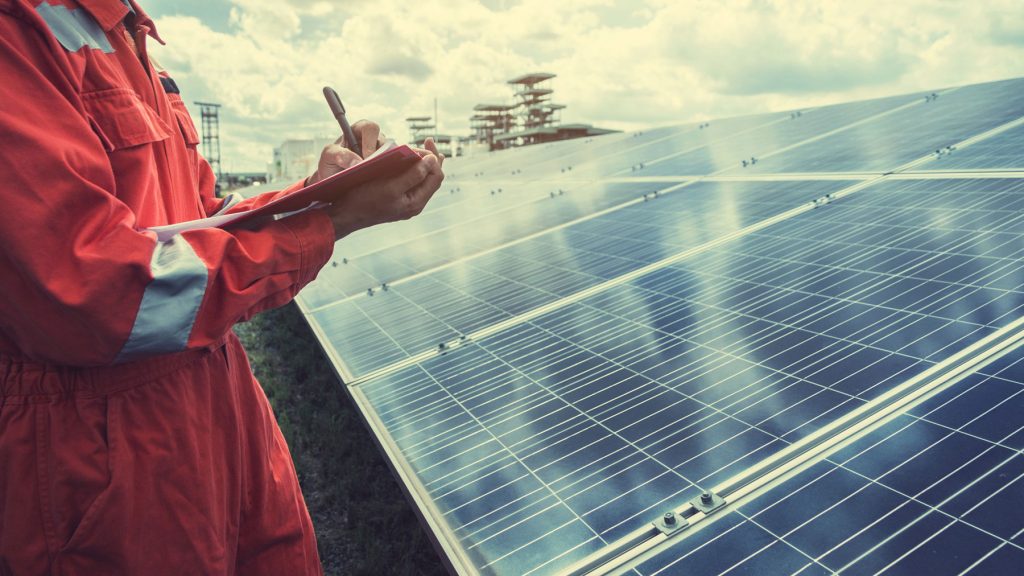In the pursuit of combating climate change and transitioning towards a more sustainable future, the world is moving towards renewable energy sources. However, the best renewable sources are the ones that leave the lowest carbon footprints.
A carbon footprint is a measure of the total amount of greenhouse gas emissions, primarily carbon dioxide (CO2). Different energy sources have different types of carbon footprint and the lower it is, the better the source is in mitigating climate change.
In this article, we will go through the top contenders of renewable energy that leave a minimal carbon footprint. From harnessing the inexhaustible power of the sun to tapping into the boundless energy of wind, these technologies help to mitigate the environmental impacts while providing a blueprint for a greener and more resilient planet.
Four Renewable Energy Sources With The Lowest Carbon Footprint
1) Solar Power – Harnessing The Potential Of Sunlight
Solar power stands as one of the most prominent and eco-friendly renewable energy sources available today. Utilizing photovoltaic cells or solar panels, sunlight is converted directly into electricity, eliminating the need for any fossil fuels and generating no greenhouse gas emissions during its operation.
In addition, the entire lifecycle of solar panels, from manufacturing to decommissioning, has a remarkably low carbon footprint (41 gCO2/KWhPV) compared to conventional power sources. As solar technology advances, this improves its efficiency and affordability over the years. Because it is very accessible for both commercial and residential use, solar panels can help spread the benefits of a low carbon footprint source of renewable energy.
The growth of solar farms and rooftop installations has allowed communities to tap into the immense power of the sun, further reducing their dependence on carbon-intensive energy sources. Apart from leveraging unused rooftops and unutilised land, as research and development continue to unlock new innovations, the potential of solar power to revolutionize the energy landscape and contribute to a sustainable future remains boundless.

2) Wind Power – Utilising Aerodynamic Energy
Wind power, another significant contender among renewable energy sources, harnesses the kinetic energy of moving air to generate electricity. Wind turbines, often found in wind farms, capture this energy and convert it into a clean power source without releasing any greenhouse gases during operation.
The carbon footprint associated with wind power is exceptionally low (11 gCO2/KWh), as it requires minimal resources for maintenance once the turbines are installed.
The versatility of wind power allows for both onshore and offshore installations, catering to various geographical and environmental conditions. Wind farms can be established in windy regions, ensuring that energy production is maximized while minimizing the environmental impact.
However, compared to solar, wind power can’t be effectively harnessed in land-scarce countries and turbines can’t be easily installed in both commercial and residential spaces.
3) Hydropower – Channeling Gravitational Potential Energy
Hydropower is a well-established renewable energy source that harnesses the energy of moving water to generate electricity. By constructing dams or other water control structures, the potential energy stored in reservoirs is released in a controlled manner, driving turbines and producing electricity.
The operation of hydropower plants produces small amounts of greenhouse gas emissions (24 gCO2/KWh), contributing to its low carbon footprint.
Large-scale hydropower projects can provide substantial amounts of clean energy to meet the needs of entire communities. Additionally, small-scale hydroelectric systems can be employed in regions with suitable water resources, providing a decentralized and eco-friendly energy solution.
Just like wind power, hydroelectric dams require big land masses and bodies of water to be freely available to be built around and utilised. This makes it impractical for many countries as well as near impossible for commercial and residential use.

4) Geothermal Power – Using Earth’s Natural Heat
Geothermal power emerges as a remarkable renewable energy source with a low carbon footprint.
By tapping into the natural heat stored beneath the Earth’s surface, geothermal power plants produce electricity without burning fossil fuels or emitting greenhouse gases during operation. Utilizing the Earth’s internal energy reservoir, geothermal power systems harness the steam or hot water trapped in geothermal reservoirs to turn turbines and generate clean electricity.
While it has a low environmental impact (38 gCO2/KWh), its use is restricted to regions on Earth that have geothermal power potential. This includes Iceland, New Zealand and the selected areas in the United States. It is impractical for any commercial and residential applications.

Embrace Solar Power With TotalEnergies ENEOS
At TotalEnergies ENEOS, we help companies and organisations across the APAC region build sustainable and cost-effective solar systems, allowing them to facilitate their transition towards green energy.
To learn more about how we can help to support your sustainability goals and reduce your carbon footprint, contact us directly for a free consultation.
